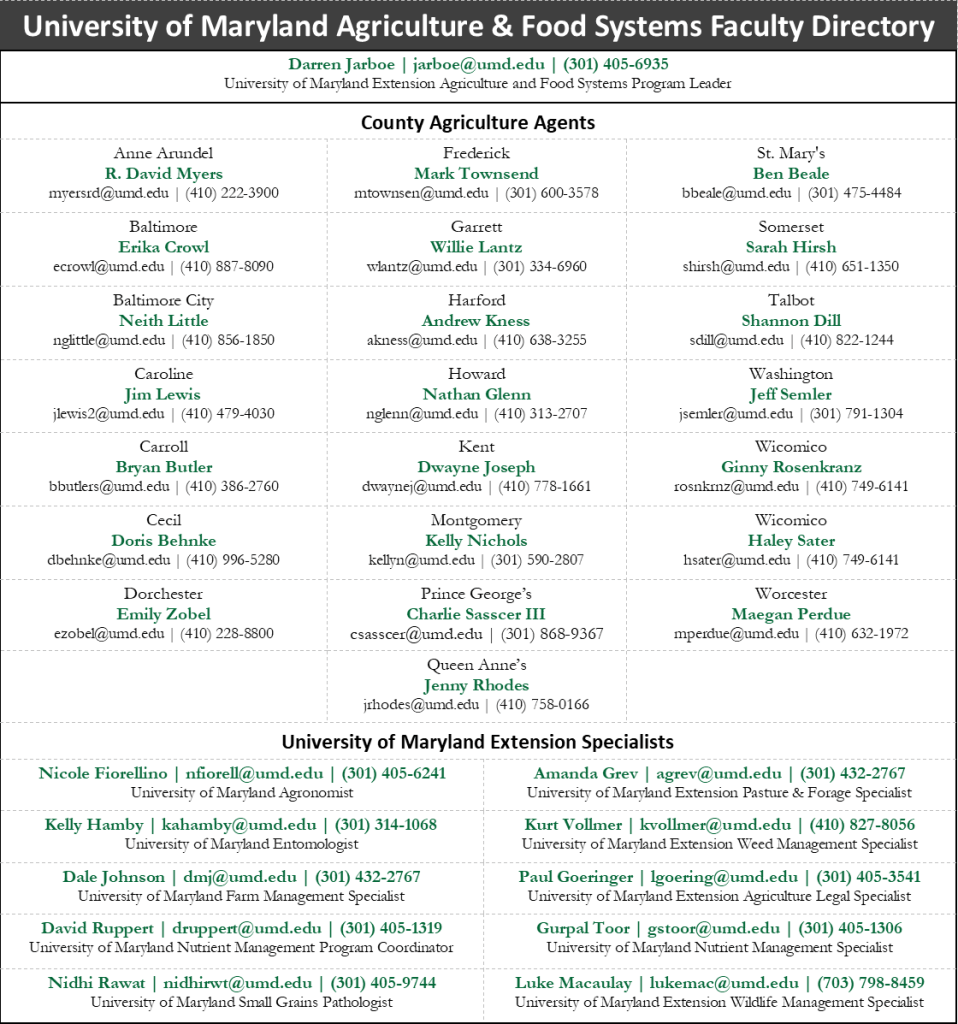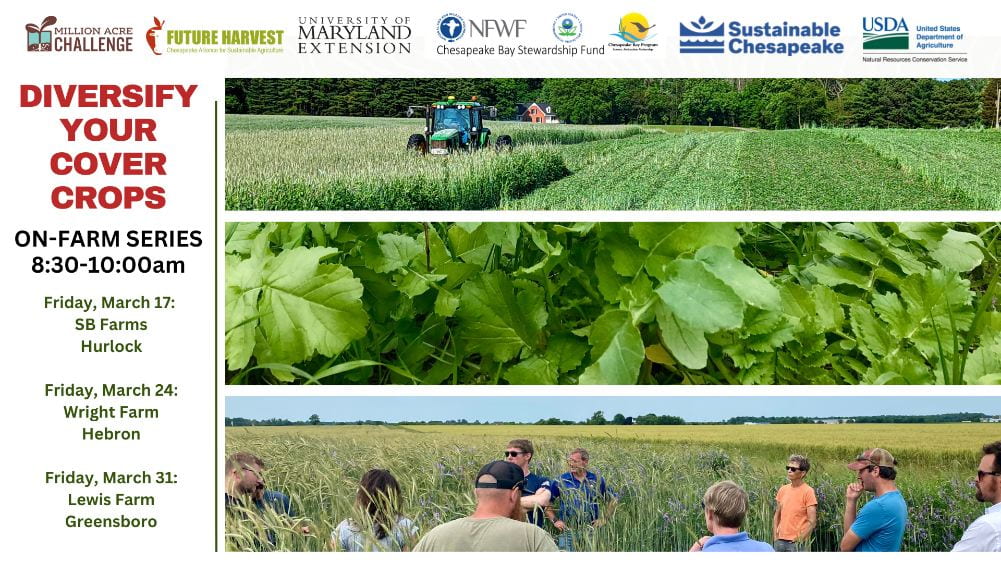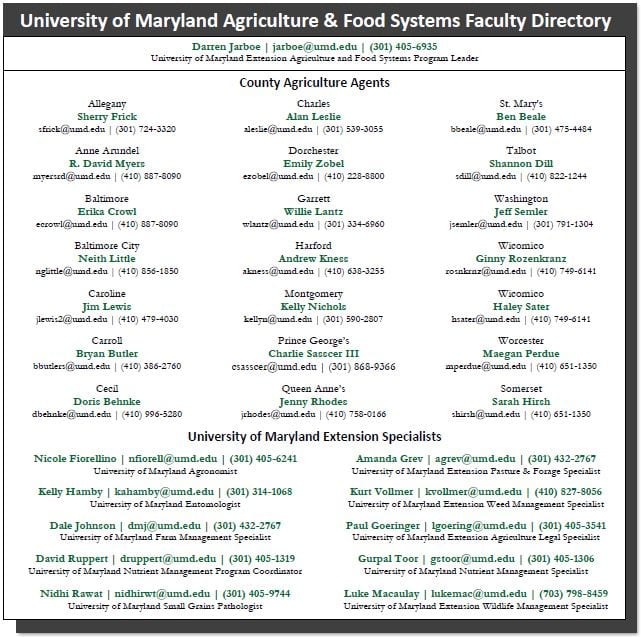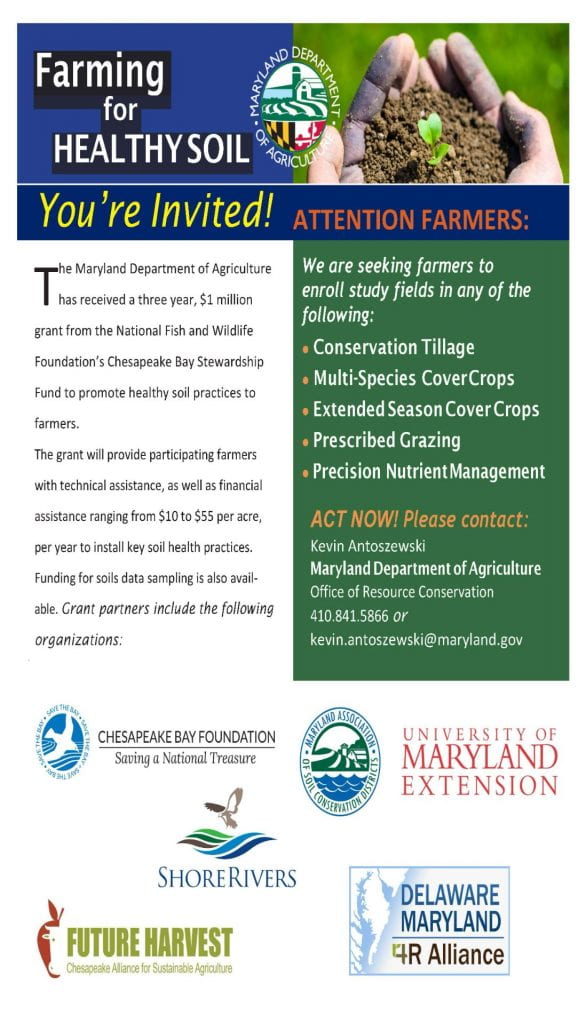 Reports are for crop conditions up to May 4, 2023.
Reports are for crop conditions up to May 4, 2023.
Western Maryland
Welcome rains fell over the weekend but cooler temperatures will stall the corn that has been planted. Most of the triticale has been harvested and the barley is in head. First-cutting alfalfa will soon be mowed when sun and rain allow. Corn planting will continue at breakneck speed since soybeans are haunting farmers from their seed sheds. Thus far peaches and apples are faring ok as long as the nighttime cold temps don’t drop too far. Spirits are high since our recent rains and farmers are eternal optimists.—Jeff Semler, Washington Co.
Central Maryland
We have finally received some much needed rain, with areas around the county getting a total of 2-3 inches in the past several days. However, this cool and wet weather has slowed planting, as well as crop and summer annual weed emergence. A majority of corn has been planted. Some emerged corn is yellow due to the cooler weather. Barley and wheat are heading.—Kelly Nichols, Montgomery Co.
Much of the small grain acres for forage have been harvested in the last three to four weeks. Many wheat acres are moving past flag-leaf and into heading, though this has been slowed with recent weather. Barley across the county, though short, is headed and into flowering. Some early planted corn has emerged and generally appears okay, however the cooler temperatures have slowed development and in some cases resulted in a few more yellow leaves. Not many soybean acres have been planted thus far, though the ones that have are not yet emerged.—Mark Townsend, Frederick Co.
Northern Maryland
The season was off to an early start, with most everyone that had a corn planter had it rolling full tilt by April 20 or so, which is normally around the time folks are just playing around with planter settings. Since last week, the rains came and temperatures took a nose dive and we went from hot and dry to cool and wet, which has stopped planting. Right now a good majority of the corn crop is planted, with some emerged and looking ok but it is probably wondering where the warm weather went. Some soybeans have been planted, but not a lot. This weather brings the possibility of slug pressure. Early wheat varieties have already flowered; later varieties should be heading in the next few days.—Andy Kness, Harford Co.
Upper and Mid Shore
We were ahead of schedule planting until the heavy rains last week. Soil moisture is optimum/excessive with last weeks 4-6” rain. Early planted corn has faded to a yellow hue with the recent cold weather. Early planted beans have been providing slugs, breakfast, lunch, and dinner with cloudy damp weather. Planters are full and tractors are fueled up waiting for dry sunny weather. Small grain has headed and is being sprayed with scab protectant fungicides. A little dot of hay was made before the rains.—Jim Lewis, Caroline Co.
Lower Shore
After a very dry couple of weeks, we had a heavy rainfall last weekend, ranging from 3-4 inches across the lower shore. Corn planting began before the rain, and now farmers are waiting for the ground to dry out to continue. Some farmers are concerned they will have to replant some corn acreage planted prior to the rain. Winter wheat is looking good and heading out. Fungicides are being sprayed on wheat. Most cover crops have been terminated, but those that remain look great and will provide a nice mulch for reducing summer weed pressure.—Sarah Hirsh, Somerset Co.
Southern Maryland
Planters have been running for weeks now. May-like temperatures in April brought about nearly ideal conditions, and many folks rolled the dice with early planting. It appears it was a good bet as stands have emerged well with no frost. I suspect we are close to 90% planted in So MD. We have many acres of early planted soybeans again this year. Rain was hard to come by with soil conditions becoming dry a couple of weeks ago. Rain 10 days ago and last weekend was much needed though it delayed planting progress. The current week of cooler weather has slowed crop progress, but overall we are in good shape. With recent rains, keep an eye out for slugs in newly emerged fields. In other crops, barley is headed out with some fields turning already. Wheat is headed and flowering now. We have seen an extended flowering period in wheat this year, with a lot of variability in flowering across the same fields. Alfalfa weevil pressure has been high this year. Be sure to scout fields for weevil injury. I have seen a lot of fields with a white cast due to severe feeding injury. In our area, pyrethroids are no longer working well due to resistance. Steward EC is the best alternative. On the fruit and vegetable front, plasticulture strawberries has an excellent growing season and are ripening now. I expect a bumper crop of berries this year. All of our main season vegetable crops are preparing to go in the ground this week.—Ben Beale, St. Mary’s Co.
*Regions (counties):
Western: Garrett, Allegany, Washington. Central: Frederick, Montgomery, Howard. Northern: Harford, Baltimore, Carroll. Upper & Mid Shore: Cecil, Kent, Caroline, Queen Anne, Talbot. Lower Shore: Dorchester, Somerset, Wicomico. Southern: St. Mary’s, Anne Arundel, Charles, Calvert, Prince George’s









